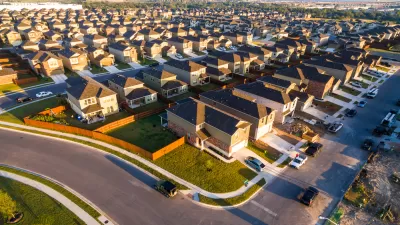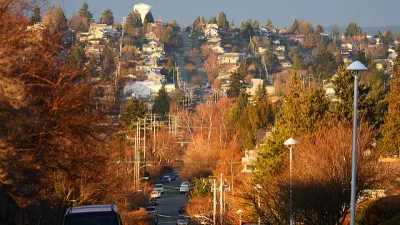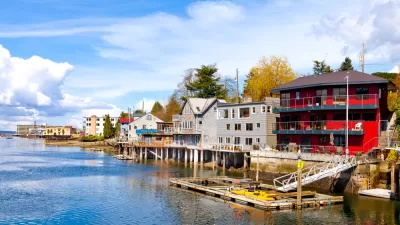Few housing markets serve as a better case study about the politics and effects of housing supply than Seattle. A local writer takes a deeper look at the city's total development over the past year and comes to some surprising conclusions.
Ethan Phelps-Goodman takes a look back at the development year that transpired in Seattle, finding that appearances don't tell the whole story. According to Phelps-Goodman, that is, all those construction cranes dotting the city skyline don't mean that 2015 was a pace-setting year for construction: "housing production is actually set to decline this year as compared to the year before."
More specifically:
"Extrapolating from numbers published by the City of Seattle for the first three quarters of 2015, housing production for this year will be about 6,800 units (although an end of the year surge is certainly possible). That’s about equal to 2013 levels, but off significantly from the 8,300 units produced in 2014."
Phelps-Goodman notes that the city's development environment suffers from a problem of perception. So while production of single-family homes, townhouses, and small apartments increased more than 20 percent, construction of midrise buildings dropped from 3,800 units to a projected 2,700 units this year. Phelps-Goodman also notes that the perception problem is also a question of location, with neighborhoods like Capitol Hill, First Hill, the U-District, and Columbia City adding lots of units, while South Lake Union, Northgate, Queen Anne, Ballard, Green Lake, and Roosevelt had a "paucity" of projects.
It's also worth noting that the city data cited by Phelps-Goodman produces a narrative that contradicts a story pushed in November, in which landlords lamented a "tsunami" of rental units coming online in the region over the past several years, slowing the growth of media rents.
FULL STORY: Despite perceptions, housing production down in 2015, single family home construction up

Planetizen Federal Action Tracker
A weekly monitor of how Trump’s orders and actions are impacting planners and planning in America.

Maui's Vacation Rental Debate Turns Ugly
Verbal attacks, misinformation campaigns and fistfights plague a high-stakes debate to convert thousands of vacation rentals into long-term housing.

San Francisco Suspends Traffic Calming Amidst Record Deaths
Citing “a challenging fiscal landscape,” the city will cease the program on the heels of 42 traffic deaths, including 24 pedestrians.

Amtrak Rolls Out New Orleans to Alabama “Mardi Gras” Train
The new service will operate morning and evening departures between Mobile and New Orleans.

The Subversive Car-Free Guide to Trump's Great American Road Trip
Car-free ways to access Chicagoland’s best tourist attractions.

San Antonio and Austin are Fusing Into one Massive Megaregion
The region spanning the two central Texas cities is growing fast, posing challenges for local infrastructure and water supplies.
Urban Design for Planners 1: Software Tools
This six-course series explores essential urban design concepts using open source software and equips planners with the tools they need to participate fully in the urban design process.
Planning for Universal Design
Learn the tools for implementing Universal Design in planning regulations.
Heyer Gruel & Associates PA
JM Goldson LLC
Custer County Colorado
City of Camden Redevelopment Agency
City of Astoria
Transportation Research & Education Center (TREC) at Portland State University
Jefferson Parish Government
Camden Redevelopment Agency
City of Claremont





























